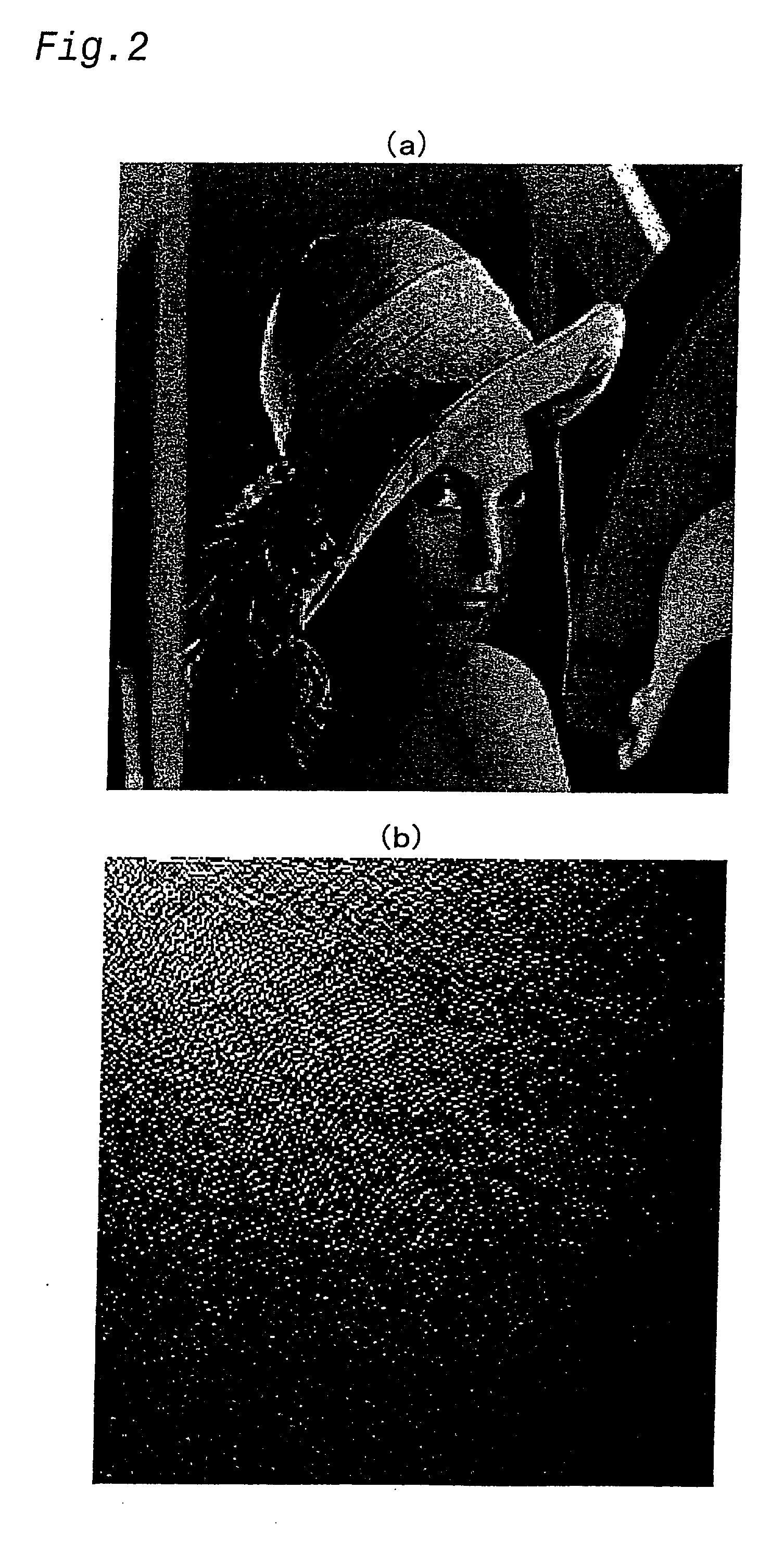Technique of embedding and detecting digital watermark
- Summary
- Abstract
- Description
- Claims
- Application Information
AI Technical Summary
Benefits of technology
Problems solved by technology
Method used
Image
Examples
first embodiment
[0098] A. First Embodiment
[0099] The following describes a first embodiment of the present invention, where discrete cosine transform (DCT) is applied for orthogonal transformation (or frequency transformation) and color image data is an object of embedding watermark information.
[0100] A-1. Process of Embedding Digital Watermark
[0101] FIG. 1 shows the outline of a process of embedding a digital watermark in the first embodiment of the present invention.
[0102] The process first provides original color image data G.sub.rgb as an object of embedding watermark information and watermark information s to be embedded. In this embodiment, the original color image data G.sub.rgb is expressed by an RGB (red, green, blue) color system and has a size of M.times.N pixels and color of each pixel expressed by R (red), G (green), and B (blue) components. The watermark information s is a bit string s[p] (p=0, 1, . . . , P-1) having a bit length P. The bit string s[p] takes either a value `0` or a va...
second embodiment
[0150] B. Second Embodiment
[0151] The following describes a second embodiment of the present invention, where discrete Fourier transform (DFT) is applied for orthogonal transformation (or frequency transformation) and color image data is an object of embedding watermark information.
[0152] B-1. Process of Embedding Digital Watermark
[0153] FIG. 14 shows the outline of a process of embedding a digital watermark in the second embodiment of the present invention.
[0154] The process first provides original color image data G.sub.rgb as an object of embedding watermark information and watermark information s to be embedded. Like the first embodiment, in the second embodiment, the original color image data G.sub.rgb is expressed by the RGB color system and has the size of M.times.N pixels and color of each pixel expressed by the components R, G, and B. The watermark information s is the bit string s[p] (p=0, 1, . . . P-1) having the bit length P. The bit string s[p] takes either the value `0...
third embodiment
[0196] C. Third Embodiment
[0197] The procedure of the first embodiment applies the DCT onto color image data as the embedding object, embeds watermark information into the generated DCT coefficients, and then applies the IDCT, the inverse transform of DCT, onto the embedding-processed DCT coefficients. This procedure requires the two different operations, DCT and IDCT, in the course of embedding the watermark information, thus taking a relatively long time for processing.
[0198] The procedure of a third embodiment accordingly does not apply the DCT onto the color image data as the embedding object, but applies the DCT onto watermark data representing watermark information to be embedded and embeds the generated DCT coefficients into the color image data.
[0199] C-1. Process of Embedding Digital Watermark
[0200] FIG. 25 shows the outline of a process of embedding a digital watermark in the third embodiment of the present invention.
[0201] The process first provides original color image d...
PUM
 Login to View More
Login to View More Abstract
Description
Claims
Application Information
 Login to View More
Login to View More - R&D
- Intellectual Property
- Life Sciences
- Materials
- Tech Scout
- Unparalleled Data Quality
- Higher Quality Content
- 60% Fewer Hallucinations
Browse by: Latest US Patents, China's latest patents, Technical Efficacy Thesaurus, Application Domain, Technology Topic, Popular Technical Reports.
© 2025 PatSnap. All rights reserved.Legal|Privacy policy|Modern Slavery Act Transparency Statement|Sitemap|About US| Contact US: help@patsnap.com



